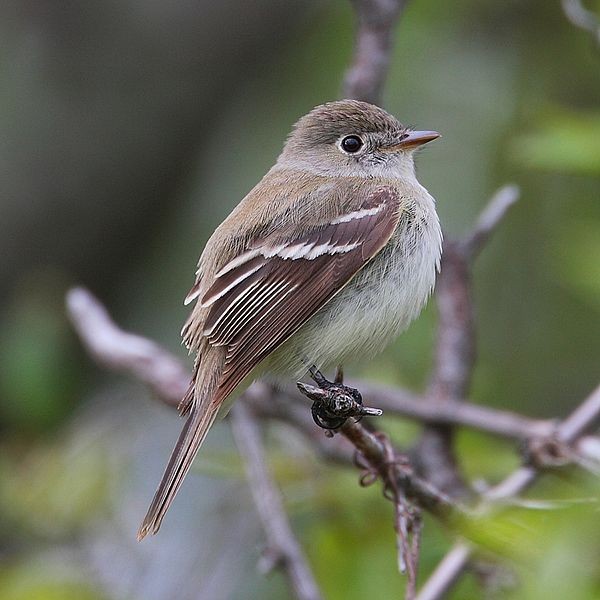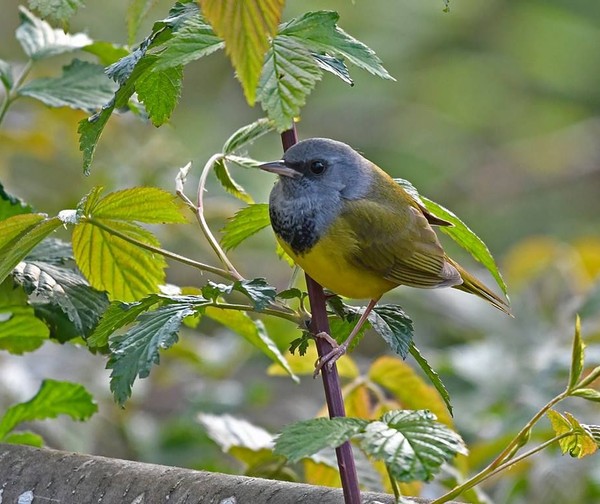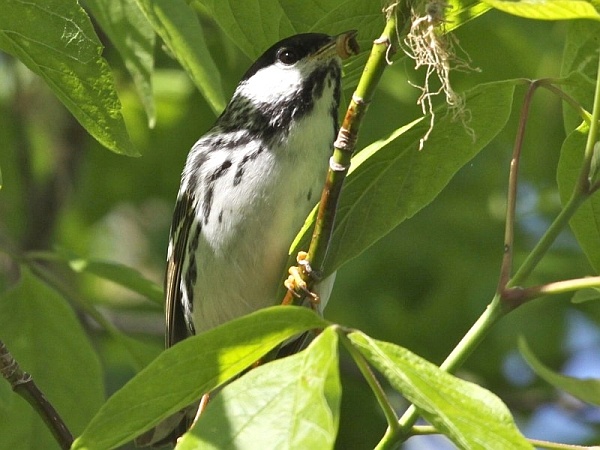
Bird migration continues in western Pennsylvania. Here’s what’s on tap this week.
Flycatchers wait until warm weather brings out the flying insects so we should expect them soon. On Wednesday it’ll be 90 degrees!
Watch and listen for Empidonax flycatchers: least, acadian, willow and alder. All of them are small, drab olive birds with wing bars. They look alike but you can tell them apart by voice. Included below are summary descriptions from Cornell’s All About Birds.
Pictured above is the least flycatcher (Empidonax minimus), the smallest of the four. All About Birds calls him “a small drab flycatcher of open woods.” He sings, “Che-BEK”
“Least Flycatcher (Empidonax minimus)” from xeno-canto by Paolo Matteucci. Genre: Tyrannidae
The acadian flycatcher (Empidonax virescens) looks like the least flycatcher but he’s larger and greener. Find him along streams and in deciduous forests. His voice is an explosive “PEET sah!”
“Acadian Flycatcher (Empidonax virescens)” from xeno-canto by Aaron Boone. Genre: Tyrannidae.
The willow flycatcher (Empidonax trailii) prefers wet brushy sites and sings “fitz-bew.” On Sunday I checked for willow flycatchers at one of their favorite sites, the Duck Hollow end of Frick Park’s Nine Mile Run Trail. They hadn’t arrived yet.
And finally, the alder flycatcher (Empidonax alnorum) is so similar to the willow flycatcher that they used to be the same species. The only way to tell them apart is by voice. All About Birds describes the alder’s song as “a harsh, ripping “f-bee-oo.” Good luck!
“Alder Flycatcher (Empidonax alnorum)” from xeno-canto by Cole W.. Genre: Tyrannidae.
We’ll also see some “eye candy” this week. Here are two warblers to watch for.

This mourning warbler (Geothlypis philadelphia) was already in Forest County, Pennsylvania when Tony Bruno photographed him last weekend. Mourning warblers prefer to skulk in dense vegetation so you’ll hear them before you see them.
“Mourning Warbler (Geothlypis philadelphia)” from xeno-canto by Martin St-Michel. Genre: Parulidae.

Blackpoll warblers (Setophaga striata) could be confused with black-and-white warblers but they have solid black caps and solid white faces. No stripes there! Blackpolls sing a high pulsing song which All About Birds calls nature’s hearing test. I’ve included the sonogram below so you can see when it plays. Can you hear it? I can’t any more. (There’s a Swainson’s thrush in the background of this recording.)
“Blackpoll Warbler (Setophaga striata)” from xeno-canto by Martin St-Michel. Genre: Parulidae.
(photo credits:
least flycatcher from Wikimedia Commons; click on the image to see the original
mourning warbler by Anthony Bruno
blackpoll warbler by Chuck Tague)
We have a pair of Eastern Phoebes nesting above our front door. They have been around about a month, I’d say. Since they are fly-catchers also, I’m surprised they come up so much earlier. I’m hoping if they return next year we can put up some type of nesting platform that will be more attractive than the protruding stone facing next to our front door 🙂